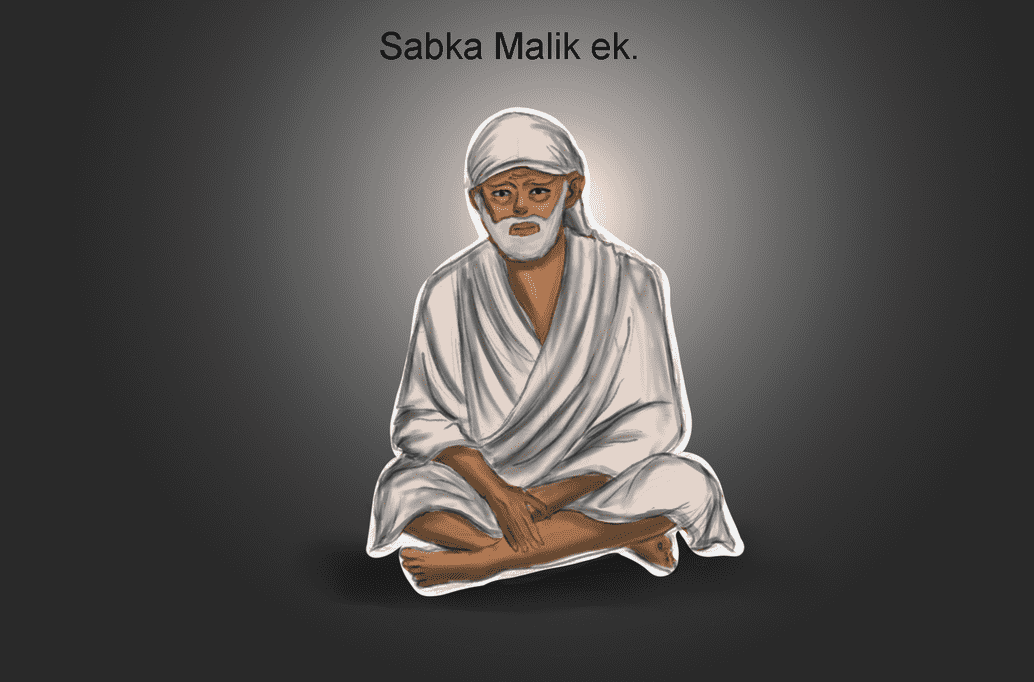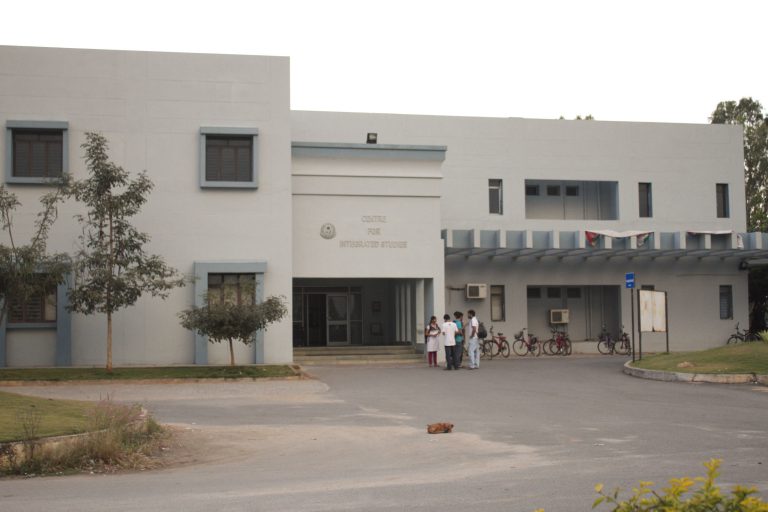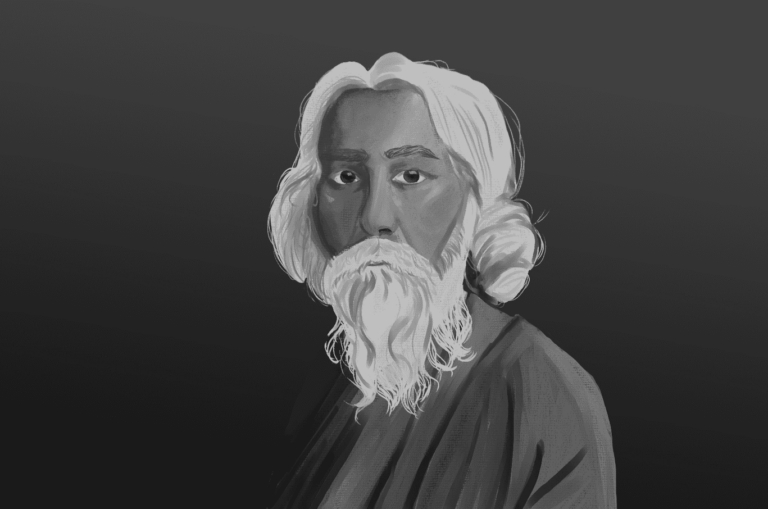Om Sai Ram- A fool’s thoughts on sai bhajan tradition in Assam
Anuraag is a ‘Contributing Writer’ at The ArmChair Journal.
Official info- A student pursuing PhD in International Politics (IP), School of International Studies (SIS), Central University of Gujarat (CUG)
Unofficial ‘True’ intro -A Homo Sapien from Guwahati trying to jot down a few lines on history, politics, international relations and short stories. Sometimes likes to rant like a frustrated millenial of the climate change and n- COVID world.
Om Sai Ram (Praise to Sai) to all my readers and Sai Bhakts (devotees) among them.
Firstly, the article is not a eulogy to Shirdi Sai nor is it written with any intention to question his teachings or defame the saint himself nor insult the devotion of his followers whose numbers go into millions even as certain ‘guardians of society’ have gone after Sai posthumously in search of his ‘AADHAR Card details’ to determine whether he was a Hindu or Muslim ‘Jihadi’[1].
In view of the last part of the previous statement, the article also does not intend to descend into the controversy of Sai’s ‘original religious credentials’ or ‘motives’. Rather, the current piece is an attempt to coherently put together the thoughts of the author who was absent-mindedly sitting in a Sai Bhajan Sandhya or evening congregation of Sai devotees in Guwahati.
The event and its various components− the bhajans (devotional songs), the attendees including me and my mother and the surroundings made me view and think about the entire session and the tradition itself in socio-cultural terms, especially that of Assam. At the same time, I must confess that despite brief forays into sociological theories during my undergraduate days at Tata Institute of Social Sciences (TISS), Guwahati, I do not claim to possess the intuitive and scholarly eyes of a sociologist in order to rationalise my Sai Sandhya experience through the theories of Emile Durkheim, Robert K. Merton, Malinowski, Levi Strauss, Foucault etc. As I would like to reiterate, it is just the recollections of the thoughts of a ‘fool’ who instead of diving into Bhakti rasa (Devotional Bliss) was trying to scuba-dive in the waters of theory- rasa.
At the very outset, it would be proper for me to state my relationship with Shirdi Sai Baba. From my childhood days till my late teens around 17 years of youth, Shirdi Sai appeared to me like an alien or a ‘misfit’ among the pantheon of Hindu deities I had grown up with. This was primarily because he looked more ‘human’ than other deities as well as did not exhibit the other signs of ‘divinity’ like multiple arms, carrying weapons or sitting atop any vahana or ride. Just a simple, ‘frail’, an old man with a saffron bandana on his head and draped in saffron robes.
It was also because of my location in Guwahati in Assam in the Far East (or North East− whatever the reader chooses) of India − a region which had vestigial traces of Shirdi Sai Baba tradition and temples (during the early 2000s) even as his ‘re-incarnation’ Sathya Sai would often peek down on me from the picture hung in my uncle’s drawing room in Nagaon, Assam.
Sai first came to my notice, and I would like to believe, in the eyes of many Assamese, through popular serials like Sai Baba – Tere Hazaaron Haath[2] (Sai Baba and his Thousand Hands) which was aired on Star Plus in 2005. The actor Mukul Nag (portraying Sai Baba) became synonymous with the saint himself. Along with this, bhajans like Sai Nath tere hazaaron haath[3] (Lord Sai with a thousand hands) and Aaj Guruvaar hai, Saiji ka vaar hai[4] (Today is Thursday the day of Sai Baba) which began to permeate the cassette players of the temple priests of Guwahati also made me aware of Sai Baba.
Coming to my current times, my mother has become an ardent devotee of Shirdi Sai during my treatment for Leukaemia and has started following the rituals of any other Sai devotee − worshipping him on Thursday, reading a few pages from the Sai Charit Manas (The times of Sai) and even sitting before the TV around 7 pm to watch Mere Sai (Our Sai) on SONY TV. She was guided by my aunt, a veteran Sai devotee, who initiated her into the tradition and the two would together visit Sai temples in Guwahati. I too did not mind joining her in some of the travels, as I found Sai temples to be much cleaner and calmer (except on Thursdays) than the usual temples. It was against this backdrop that I found myself attending the Bhajan Sandhya which became for me a ‘Chintan Sandhya’ (A contemplative evening).
Firstly, what struck my mind was the manner in which the congregation was organised and how the members comported themselves during the session. With the men (not many) dressed in kurtas and myself in a t-shirt, the ladies, including my mother, were all dressed in saree or the traditional Assamese two-piece female silk clothing known as Mekhela Sador. But what caught my eye was the group of ‘professional’ bhajan singers complete with their musicians who had been invited to lead the day’s Bhajan Sandhya. Not only were they dressed in colourful sarees and mekhela sadors, but what made them more visible was the jewellery bedecking their necks which shone as they sang bhajans dedicated to Sai in Hindi and Assamese.
The entire setting reminded me of the North Indian Jagrata or the all-night vigil marked by bhajans and dances, usually performed by ladies, in honour of Hindu deities such as Shiva, Devi or Goddess. I wondered, just like the North Indian traditions such as Dhanteras (an occasion marked two days before Diwali), Mehendi and Haldi (applying turmeric paste and henna to would-be brides) which had entered popular Assamese consciousness at least in Guwahati, would Sai Bhajan Sandhyas make way for the slow acceptance of Jagrata in Assam? While vestiges of Jagrata can be seen in localities with huge migrant populations from Bihar, would this tradition become so popular as to make Assamese channels organise Jagrata contests?
It should also be stated that a form of Jagrata known as Naam (নাম) or the recital of the Lord’s Name was already an important element of Assamese cultural life, which was introduced by the Neo- Vaishnavite saint Mahapurush Srimanta Sankardeva. As a tribute to Srimanta Sankardeva, the Sai Bhajan singers also sang one of his compositions during the session. For now, only time will tell whether Jagrata will also seep into the cultural life of the 21st century Assamese or not.
The next interesting aspect were the Bhajans themselves. Along with the usual popular Sai Bhajans mentioned above, I also noticed a unique innovation done by the singers. They would recycle old Bollywood or popular numbers by replacing the original lyrics with verses praising Sai Baba while keeping the tone and pace of the song intact. While conservatives and purists might find this ‘unorthodox’ practice as ‘heretical’, for me they represent a ‘democratisation’ of the religion allowing lay practitioners or devotees to come up with their own unique ways of expressing reverence for Shirdi Sai without the constraints of pre-determined religious code.
This trend has also been witnessed in the recent ‘pop’ bhajans being played on occasions such as Kanvar Yatra or the annual pilgrimage of Shiva devotees during the Monsoon season and Jagratas. Hence, one can say that Sai Bhajans are easy to make or compose as compared to the devotional songs of other deities. And I can say that they add a different dimension to the original song which formed the inspiration. For instance, a Sai Bhajan I heard in Shirdi in October of 2022 in the tone of Falguni Pathak’s Maine payal hai chhankai[5] (I have shaken my anklets) was a far better tribute to the song which stole the hearts of us millennials than the recent desecration of this classic by Neha Kakkar[6].
Finally, the last observation pertains to the visible forms of the Sai tradition which have become almost exclusively ‘Hindu’. This observation is in context to the widely popular saying attributed to Sai Baba and which can also be seen accompanying his images and portraits− Sabka Malik Ek or ‘God (Master of All) is One’. As per popular narrative, the words were uttered by Sai Baba himself to emphasise the One-ness of God worshipped by all religions. This also happened at a time when Sai was looked at with suspicions both by the Muslims as a ‘heretic’ and by the Hindus because of Sai’s apparent Muslim origins. Hence, the ‘One’-ness of the Malik or God was also intended by Sai to exhibit his openness to people from all castes and creeds irrespective of their beliefs[7].
It is for this same reason that some of his devotees hail him as an icon of tolerance or secularism. But the current Sai tradition and its associated rituals such as Bhajan Sandhyas, vratas or fasting on Thursdays, aarti or the lighting of lamps before Sai idols seemed to have transformed Sai Baba into any other Hindu deity and thereby making him exclusively belong to Hinduism without any references to other religions.
Now, one may counter by saying that in Sai temples, an image of Jesus Christ and Guru Nanak can be found along with Rama and Hanuman or that the symbols of every major religion− Om, the Cross, the Crescent Moon and the Sikh Khanda − can be found etched in the walls of Sai temple. Yet the very fact that the shrines of Sai Baba are known exclusively as mandirs or temples and not a mosque, dargah (Sufi shrine) or church etc does attest to the exclusive claims laid upon Sai by the Hindu tradition. Not to mention that majority of the pilgrims to Shirdi are Hindus and rarely does one come across any Christian or Muslim pilgrim.
While I have no intention to create any situation even remotely similar to the Ayodhya or Gyanvapi disputes, yet this fool believes that a better homage to Sai would be to create a new tradition which is ‘hybrid’ in nature by inculcating bits and pieces of traditions from all major religions. For instance, post the aarti, the distribution of prasad or offerings could be similar to the Eucharist tradition of Christianity and the bhajans could also be composed in the style and tone of Gurbani of Sikhs while the tradition of langar or community kitchen is common in both Sai and Sikh traditions. Bhajans could also be composed in the Sufi tradition as well since Sai was considered by some sections of Muslims as a Sufi pir or teacher. Or else, along with Sai mandirs, there should also be a tradition of Sai churches as well where instead of bhajans one has choruses with cakes and bread replacing the khichdi served in mandirs.
After all, does it matter whether Sai is honoured by bhajans, Sufi songs, choruses or prayers if ‘Sabka Malik Ek’? This fool also believes that such a syncretic and ‘hybrid’ tradition would do great service at a time of religious strife, where even Sai, as mentioned in the beginning, is being scrutinized for his Birth Certificate (born in a Hindu or Muslim family)[8].
Despite being aware that the above paragraphs might contain elements appearing incendiary to some readers, I hope the author would be overlooked as he is nothing but a mere simpleton and fool who lacks the quality to become a politician. Hoping that eager Liberals will not brand me a ‘xenophobic ethno-nationalist’ after reading these ramblings of mine, I would next time try to think harder than Auguste Rodin’s The Thinker on two interesting issues− The ‘Bengalisation’ of Durga Puja (the prevalence of Sindoor khela or vermilion Holi among Guwahati ladies) and the ‘Marwari-fication’ of Diwali (the observation of Dhanteras and Bhai Dooj by Assamese households) in Assam. Obviously, with no offence to Bengali and Marwari readers by this Assamese mokkel (fool). Till then OM SAI RAM.
References
- Aaj Guruwar hai, Sai ji ka vaar hai (https://www.youtube.com/watch?v=2EARSMIuFpw)
- Falguni Pathak, Maine payal hai chhankai, (1990)- https://www.youtube.com/watch?v=0tjVtYtZ384)
- ‘Labelled ‘jihadi’, Sai Baba’s idol demolished in Delhi. Hindu hardliner exults. Devotees despair’, Scroll, 4 April, 2021 (https://scroll.in/article/991155/labelled-jihadi-sai-babas-idol-demolished-in-delhi-hindu-hardliner-exults-devotees-despair)
- Neha Kakkar, O Sajna (2022)- https://www.youtube.com/watch?v=6a6wotZ0Fao)
- Saba Naqvi, ‘Does Shirdi’s Sai Baba fit into ‘new India’?’, Deccan Herald, 9 May, 2022 (https://www.deccanherald.com/opinion/does-shirdis-sai-baba-fit-into-new-india-1107626.html)
- Sai Baba of Shirdi, Wikipedia (https://en.wikipedia.org/wiki/Sai_Baba_of_Shirdi)
- Sai Baba- Tere Hazaaron Haath, Sagar Pictures, Star Plus (https://www.youtube.com/watch?v=eVXvrGmk8L8)
- Sai Nath tere hazaaron haath (https://www.youtube.com/watch?v=JQVECPwoUa4)
Footnotes
[1] ‘Labelled ‘jihadi’, Sai Baba’s idol demolished in Delhi. Hindu hardliner exults. Devotees despair’, Scroll, 4 April, 2021.
[2] Sai Baba- Tere Hazaaron Haath, Sagar Pictures, Star Plus (https://www.youtube.com/watch?v=eVXvrGmk8L8).
[3] Sai Nath tere hazaaron haath (https://www.youtube.com/watch?v=JQVECPwoUa4).
[4] Aaj Guruwar hai, Sai ji ka vaar hai (https://www.youtube.com/watch?v=2EARSMIuFpw).
[5] Falguni Pathak, Maine payal hai chhankai, (1990)- https://www.youtube.com/watch?v=0tjVtYtZ384).
[6] Neha Kakkar, O Sajna (2022)- https://www.youtube.com/watch?v=6a6wotZ0Fao).
[7] Sai Baba of Shirdi, Wikipedia.
[8] Saba Naqvi, ‘Does Shirdi’s Sai Baba fit into ‘new India’?’, Deccan Herald, 9 May, 2022.
Featured Image Credits: Shirdisaighy







